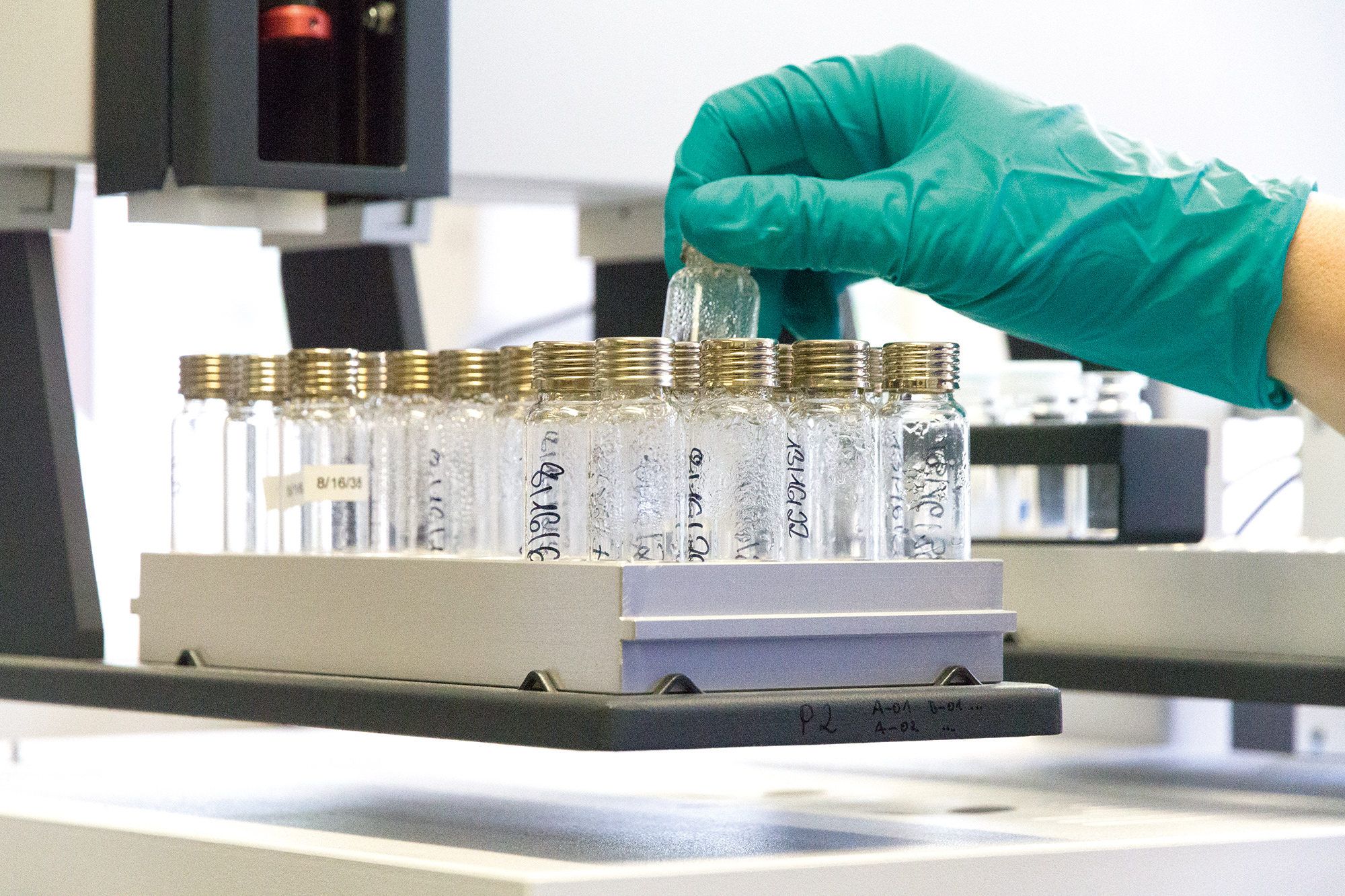Determination of fatty acids in the erythrocyte membrane
To avoid blood clotting and thrombi formation in extracorporeal treatment methods, heparins are generally used as hemodialyzers. The long-term influence of heparin on the enzyme lipoprotein lipase can lead to the formation or deterioration of fat metabolism disorders in chronic dialysis patients. Therefore, at the Katharinenhospital in Stuttgart an attempt was made to improve the lipid metabolism of this risk group by administering a fish oil preparation in addition to the normal diet, thereby following the incorporation of the high-saturated fatty acids from the fish oil into the erythrocyte membrane. For this purpose, a gas chromatographic analysis method was developed by us.
The fatty acids were extracted from the washed and freeze-dried erythrocyte membranes with trichlorotrifluoroethane and derivatized with trimethylsulfonium hydroxide to the corresponding fatty acid methyl esters. The extraction and esterification was optimized depending on temperature, medium and esterification agents.
In the subsequent gas chromatographic examination, the PTV (programmed temperature vaporizing) sample delivery system was used instead of the usual hot split injection (risk of discriminating against fugitive sample components). The sample is introduced into the cold injector and most of the solvent is blown out in the split ratio. By subsequent rapid heating of the injector block, the actual sample components are evaporated with the splitter closed and transferred to the capillary column. The percentage composition of the fatty acids (as methyl ester) is determined by comparison with the corresponding reference substances.
 Fraunhofer Institute for Interfacial Engineering and Biotechnology IGB
Fraunhofer Institute for Interfacial Engineering and Biotechnology IGB